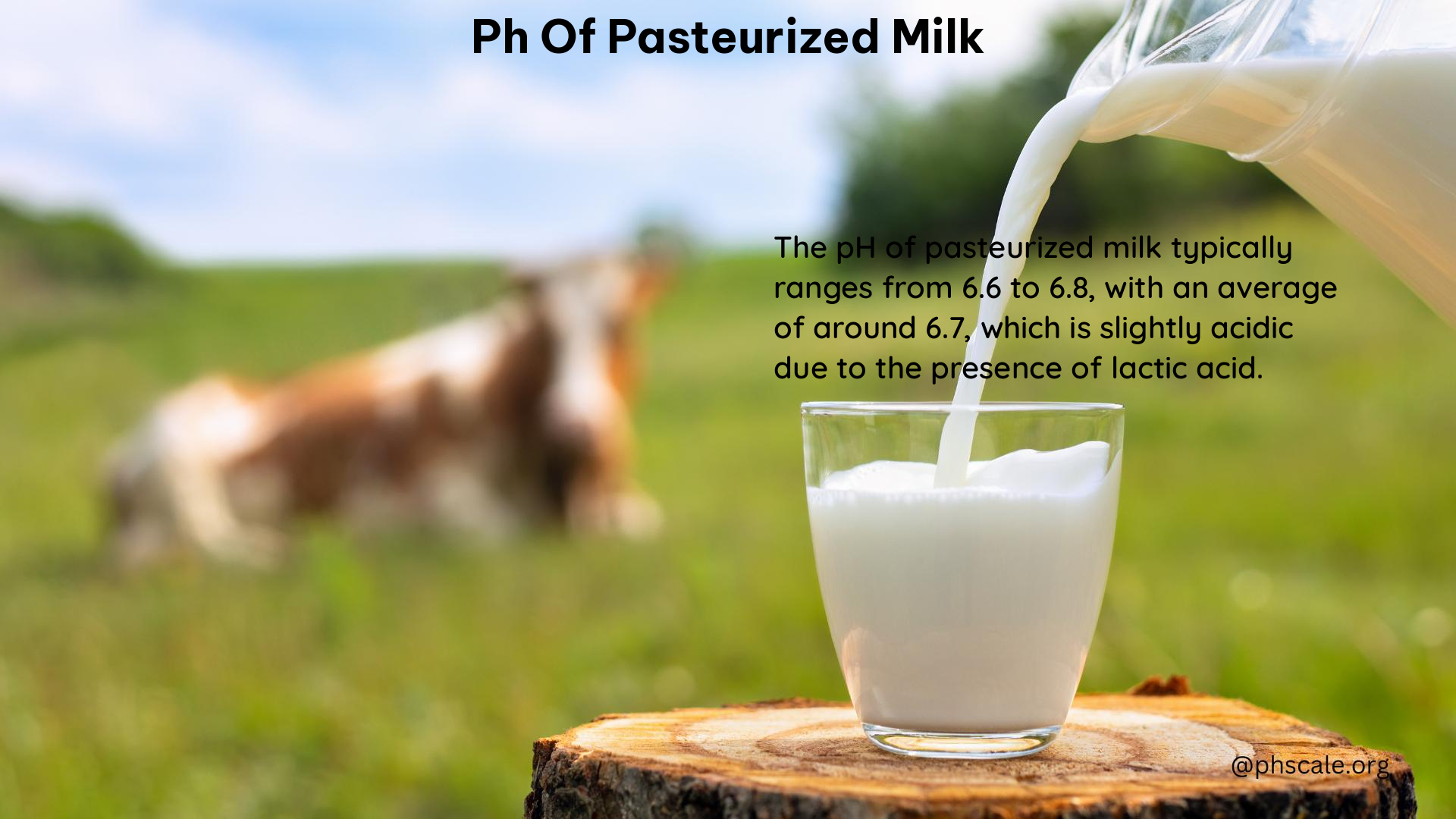The pH of pasteurized milk is a critical factor that determines its quality, safety, and overall suitability for consumption. This comprehensive article delves into the intricacies of the pH range, mean values, and the various factors that can influence the pH of pasteurized milk.
pH Range and Mean Values
The mean pH value of pasteurized milk has been found to be 6.24 in a study conducted in Gondar city, Ethiopia. However, the pH range for pasteurized milk can vary, typically ranging from 6.01 to 6.24. When compared to raw milk, the pH of pasteurized milk is often lower. For instance, a study found that the mean pH of raw milk was 6.55 for farm milk and 6.49 for milk vendors, while the mean pH of pasteurized milk was 6.24.
Factors Affecting pH

Pasteurization Process
The pasteurization process itself can have a significant impact on the pH of milk. For example, using laser pasteurization has been shown to reduce the pH of milk, with a decrease from 6.18 to 4.50 observed in one study.
Storage Conditions
Improper and prolonged storage of milk at room temperature can lead to microbial activity, which can subsequently lower the pH of the milk.
Adulteration
Adulteration of milk with water can also affect its pH and other physicochemical properties.
Permissible Limits
The permissible pH range for milk in Ethiopia is between 6.6 and 6.8, as per the Ethiopian Standard. However, the European Union has specific limits for milk quality, including pH, but these limits are not explicitly stated in the provided sources.
Contaminants and Chemicals
Microbial Contamination
Pasteurization aims to kill bacteria and fungi, but improper pasteurization can lead to microbial contamination, affecting the pH and quality of milk.
Lactic Acid
The conversion of lactose to lactic acid can lower the pH of milk, which can be a natural process or facilitated by microbial activity.
Urea and Fatty Acids
Pasteurization and sterilization can alter the composition of milk, increasing urea and affecting fatty acid profiles.
Balancing pH and Home Remedies
Fermentation
Fermenting lactose to lactic acid can help slow down spoilage and maintain a balanced pH.
Proper Storage
Storing milk at proper temperatures and handling it hygienically can help maintain its natural pH and quality.
Conclusion
The pH of pasteurized milk is a crucial indicator of its quality and safety. Understanding the factors that can influence the pH, as well as the permissible limits, is essential for ensuring the delivery of high-quality and safe pasteurized milk to consumers. By implementing proper storage and handling practices, and exploring home remedies like fermentation, the pH of pasteurized milk can be effectively balanced and maintained.
References
- Quality Assessment of Raw and Pasteurized Milk in Gondar City, Ethiopia. (2023). https://www.ncbi.nlm.nih.gov/pmc/articles/PMC10020003/
- Monitoring pH During Pasteurization of Raw Cow’s Milk using Nd:YAG Laser. (n.d.). https://www.arcjournals.org/pdfs/ijarps/v4-i12/1.pdf
- pH Value, Acidity, and Sensory Score of Pasteurized Milk Samples Distributed in Amol. (n.d.). https://www.researchgate.net/figure/pH-value-acidity-and-sensory-score-of-pasteurized-milk-samples-distributed-in-Amol-at_tbl1_323970423
